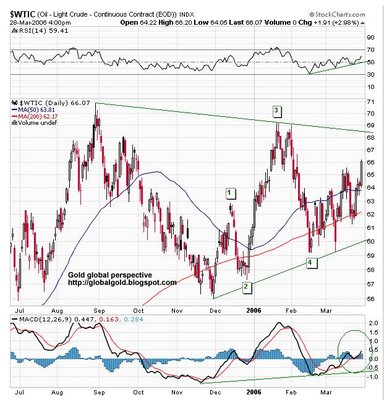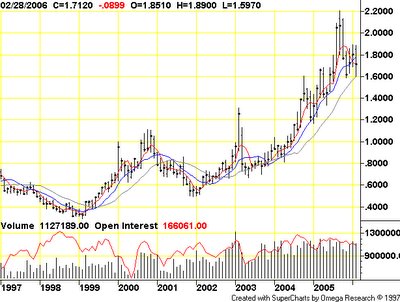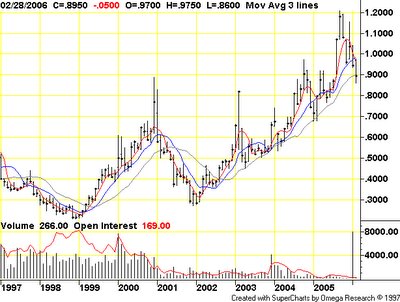Cocoa is the dried and partially fermented fatty seed of the cacao tree from which chocolate is made. In the United States, 'cocoa' often refers to cocoa powder, the dry powder made by grinding cocoa seeds and removing the cocoa butter from the dark, bitter cocoa solids. By itself it has an extremely bitter flavor.
In 2004 the world production 3,607,052 MT of cocoa beans per country was assorted as follows:
1. Côte d'Ivoire (Ivory Coast) - 1,331,494 MT
2. Ghana - 736,000 MT
3. Indonesia - 430,000 MT
4. Nigeria - 366,000 MT
5. Brazil - 169,416 MT
6. Cameroon - 130,000 MT
7. Ecuador - 88,000 MT
For over 75 years, the cocoa market of the New York Board of Trade has provided the same reliable pricing functions for the world cocoa industry: price discovery, price risk transfer and price dissemination.
As a commodity with very concentrated production sources and seasonal demand cycles, cocoa presents specific price risk characteristics for candy manufacturers, cocoa importers, exporters, trade houses and producers.
Contract calls for delivery of any kind of cocoa bean- "the growth of any country or clime, including new or yet unknown growths"- as long as it meets F.D.A. standards for importation.
Deliverable Growths: The growth of any country or clime, including new or yet unknown growths. Growths are divided into three classifications: Group A, deliverable at a premium of $160/ton (including the main crops of Ghana, Nigeria, Ivory Coast, among others); Group B, deliverable at a premium of $80.00/ton (includes Bahia, Arriba, Venezuela, among others); Group C, deliverable at par (includes Sanchez*, Haiti, Malaysia and all others).
Contract Size 10 metric tons.





